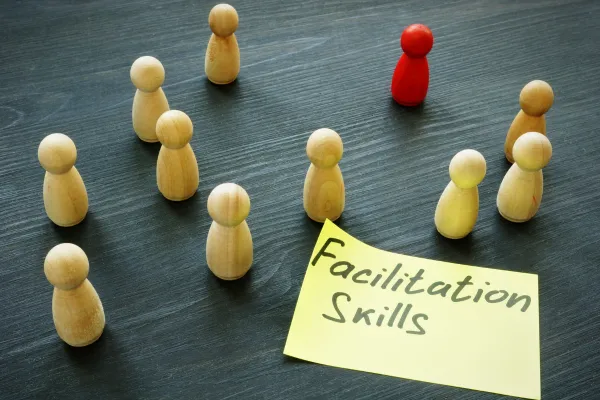
Top Facilitation Tips for Better Meetings
We spend a lot of our time in meetings, so making sure they count is important. Taking time to set the scene and giving people structured ways to contribute to discussions can be a game changer. Here are three of our favourite tools and techniques:
1. We love to use the IDOARRT framework to share with attendees what we’ll be trying to achieve together. Here’s an example from a recent webinar:

The great thing about this framework is it’s also a super helpful checklist for you as a facilitator, to help you think through what you are going to achieve. For shorter meetings you may just share what you’ve come up with, but in some instances things like the desired outcomes and roles and rules might be something you want to discuss and agree as a group (perhaps in advance).
2) Once you’ve given people a good idea of what to expect in your meeting, we recommend starting with some sort of exercise. Expecting people to be able to jump into a meeting – from all the other things they’ve been thinking about that day – and dive straight into a new problem is quite a tall ask. We use the model below to help narrow down what sort of exercise to use:

By thinking through the kind of environment you want to create and what skills you want people to flex will indicate the best exercise. For instance, if you want a group to focus and develop psychology safety as a group, a check-in question like “what’s been your highlight of the last week?” or “what’s your proudest achievement at work?” will allow for active listening and a little vulnerability. If instead you wanted to encourage psychological safety and get people thinking laterally - say ahead of generating ideas - then we recommend a creative warm-up.
3) Our final technique is the conversation carousel. This is a way of structuring a more indepth conversation. You put people in small groups and get them to work through groups of questions. You can tailor the questions to what you are trying to achieve. If it’s all about helping get people to know each other then you’ll include lots of icebreaker and check-in style questions. If you want your participants to start exploring a problem then you might have a mixture of inspiration questions like “when have you seen others do this well?” with questions that get to the crux of the issue like “what do you think is our biggest barrier?”.
Here’s an example from the same webinar, when we wanted participants to connect personally and share their experiences in the charity sector:

We usually put people in groups of 3-4 and allow 15 mins for the conversation. It’s particularly good for remote meetings, where free flowing conversation is a bit more difficult to achieve in small groups. It can also function as a good extended warm-up when you need small groups ot bond and work well together.
If you want to put any of these ideas into action in your own meetings you can download this PDF recap, which includes a link to a template.
We believe facilitation can be a fundraiser’s super power. If you want to learn more, check out our self-paced course here.
